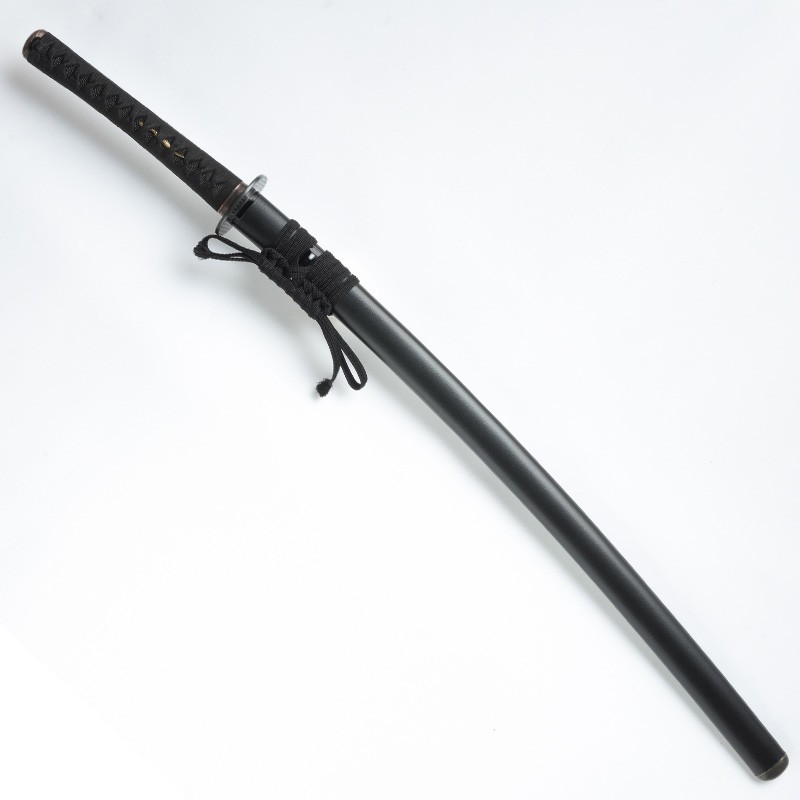














More informations about this product
This Musashi Koshirae 武蔵拵 montage is based on one of the swords that historically belonged to Miyamoto Musashi.
Musashi was a Japanese swordsman from the early 17th century (1584-1645), known for his martial treatise "The Treaty of the Five Wheels" (Gorin no Sho), and whose romanced life was written in the books "Musashi" by Eiji Yoshikawa. Among the swords that Musashi had, this one is not the best known, but it remains particularly sober and aims for efficiency.
The tsuba Shippo 七宝 (or Shichi-Ho) refers to the 7 Buddhist treasures, the 7 spiritual values that enable the individual to attain "Awakening".
These 7 treasures are belief (Gold), virtue (Silver), consciousness (Lapis lazuli), altruism (Crystal), listening (Pearl), generosity (Coral), wisdom (Agathe). The Shippo motif dates from the beginning of the Nara period (710-794) and then fell into oblivion. It was not until the Keicho period (1596-1615), the Musashi period, that this motif was rediscovered and reused by an artist, Hirata Donin, who became an imperial craftsman under Tokugawa Ieyasu.
The Menuki Tsukushi 土筆 refer to the ancient name of the island of Kyushu 'Tsukushi No Shima', where Musashi ended his life. The Tsukushi, horsemen, are also the herald of spring and symbol of rebirth. Growing suddenly as temperatures soften, It also represents the effect of surprise.
The Fuchi Kashira Yama Michi Ishime 山道石目 represents a mountain path in 'lace'. Kyushu being an island with mountainous relief, craftsmen began to use this pattern in the time of Tadaoki Hosokawa (1563-1646), Lord of Higo. Tadaoki Hosokawa was a renowned Daimyo, scholar and aesthete. His son Tadatoshi was one of the protectors of Musashi Miyamoto.
The blade type for this fixture is a light (standard) blade, approximately 820g.
Nagasa length possible from 2.20尺 (66.6cm) to 2.55 尺(77.3cm).
size charts (see attached table of recommended sizes)
Hamon: Notare (wave pattern).
Habaki: Shonai (old-fashioned design), made of brass, and golden Seppa.
Tsuba: Shippō 七宝(or Shichi-Ho), steel.
Fuchi / Kashira / Kojiri: Yama Michi Ishime 山道石目 copper. Kojiri matching.
Same: Shagreen (Roussette or Raie), Black.
Menuki: Golden Tsukushi 土筆 (Horsetail).
Tsukaito: Hineri Maki Cotton Handle Braiding.
Sageo: Genuine black silk.
Saya: Hon Kuro Ishime 本黒石目 Lacquer (Matte Black Lacquer), with Golden Shitodome.
The Minosaka Workshops :
The Iaito we offer come from Minosaka workshops in Gifu, Japan, and are manufactured in their workshop in Japan.
Gifu is one of the top places known for the forging of traditional sabres, including the Mino tradition, dating from the 14th century. Minosaka workshops are Iaito’s leading producers of tradition.
This traditional workshop manufactures its chrome-plated Zamak Iaito (Zinc and Aluminum alloy with some Copper) which is stainless.
This non-ferrous alloy makes the Iaito blunt and unsharpenable:
They are practical tools for Kata, without contact between the blades.
Items that may interest you
Share your opinion
error Your review appreciation cannot be sent
feedback Report comment
check_circle Report sent
error Your report cannot be sent